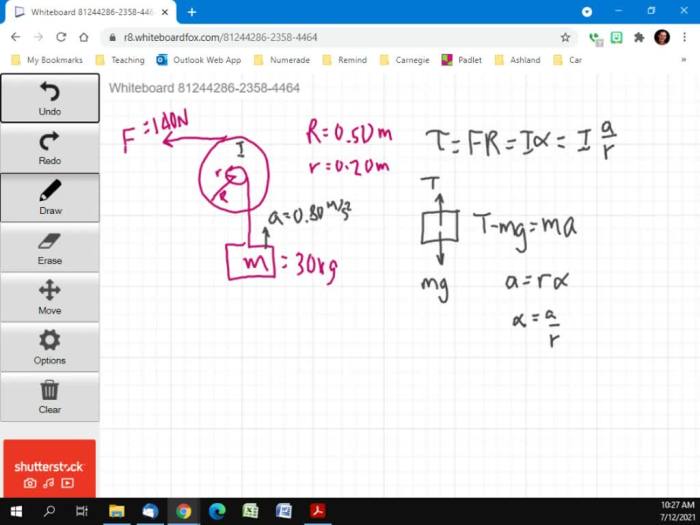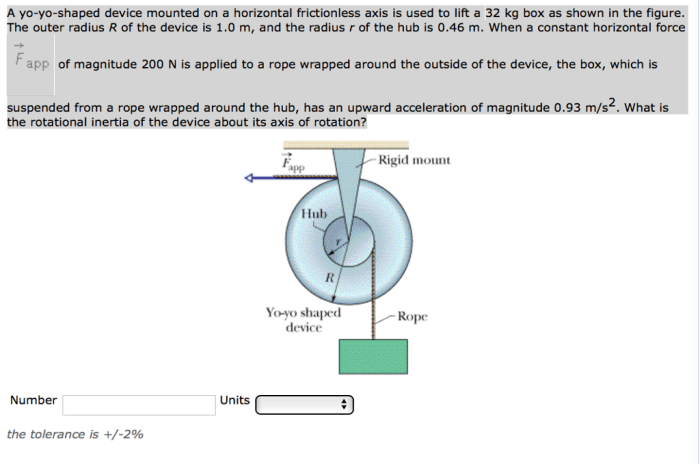A yo yo shaped device mounted – Delving into the world of yo-yo shaped devices mounted, this exploration immerses readers in a unique and compelling narrative. These intriguing devices, shaped like the beloved childhood toy, offer a myriad of applications and intriguing possibilities. From their design and engineering to their practical uses, this article unravels the captivating world of yo-yo shaped devices mounted.
Yo-yo shaped devices mounted have carved a niche for themselves in various industries, from manufacturing and engineering to scientific research and beyond. Their unique design allows for precise positioning, stability, and versatility, making them invaluable tools in diverse settings.
Overview of Yo-Yo Shaped Devices

Yo-yo shaped devices are characterized by their distinctive shape resembling the classic toy, with a central axis and two symmetrical halves. These devices find applications in various industries due to their unique design and functional capabilities.
Types of Yo-Yo Shaped Devices
Yo-yo shaped devices come in different types, each tailored to specific applications. Some common types include:
- Yo-yo Sliders:These devices have a central axis with a slider that moves along the axis, allowing for precise linear motion.
- Yo-yo Pulleys:These devices have a central axis with a pulley attached, providing a means to lift or move objects using a rope or cable.
- Yo-yo Sensors:These devices incorporate sensors into the yo-yo shape, enabling the detection of movement, vibration, or other physical parameters.
Applications of Yo-Yo Shaped Devices
Yo-yo shaped devices are commonly used in various industries, including:
- Manufacturing:Yo-yo sliders are employed in assembly lines for precise positioning of components.
- Construction:Yo-yo pulleys are used to lift heavy objects or adjust tension in cables.
- Robotics:Yo-yo sensors are integrated into robots to provide feedback on movement and environmental conditions.
Mounting and Installation of Yo-Yo Shaped Devices
Mounting yo-yo shaped devices properly is crucial for ensuring their optimal performance and longevity. Various methods are available, each with its advantages and considerations.
Surface Mounting
Surface mounting involves attaching the device directly to a flat surface using screws or adhesives. This method is suitable for permanent installations and provides a secure hold. However, it requires careful planning and preparation of the mounting surface.
Suspended Mounting
Suspended mounting involves suspending the device from a ceiling or other overhead structure using cables or wires. This method is ideal for applications where the device needs to be positioned at a specific height or location, such as in warehouses or manufacturing facilities.
Pole Mounting
Pole mounting involves attaching the device to a pole or vertical support using brackets or clamps. This method is commonly used for outdoor applications, such as street lighting or surveillance cameras.
Safety Precautions
When mounting yo-yo shaped devices, it is essential to follow proper safety precautions to prevent accidents or damage:
- Wear appropriate safety gear, including gloves and safety glasses.
- Ensure the mounting surface is strong enough to support the device’s weight.
- Use the correct mounting hardware and follow the manufacturer’s instructions carefully.
- Avoid mounting the device in areas where it could be damaged by weather, debris, or other hazards.
- Regularly inspect the mounting system for any signs of damage or wear and tear.
Importance of Correct Mounting
Correct mounting is vital for several reasons:
- Optimal Performance:Proper mounting ensures that the device is positioned correctly to maximize its performance, such as light distribution or surveillance coverage.
- Safety:Secure mounting prevents the device from falling or becoming dislodged, reducing the risk of accidents or damage to property.
- Durability:Correct mounting protects the device from environmental factors and wear and tear, extending its lifespan.
Applications and Use Cases of Yo-Yo Shaped Devices

Yo-yo shaped devices have found diverse applications across industries due to their unique design and properties. These devices offer advantages in scenarios requiring high precision, stability, and compact size.
Industrial Applications
- Precision Assembly:Yo-yo shaped devices enable precise assembly of delicate components in manufacturing processes, ensuring accuracy and minimizing errors.
- Automated Inspection:They are used in automated inspection systems to provide high-resolution imaging and precise movement for defect detection.
- Micro-machining:The compact size and precise control of yo-yo shaped devices make them suitable for micro-machining applications, enabling intricate designs and precise cuts.
Scientific Research
- Microscopy:Yo-yo shaped devices are employed in microscopy systems to provide stable and precise sample manipulation, enhancing image quality and reducing artifacts.
- Biomedical Engineering:They are used in microfluidic devices for cell manipulation and analysis, allowing for precise control of fluid flow and cell movement.
- Nanotechnology:The ability to manipulate objects at the nanoscale makes yo-yo shaped devices essential for research in nanotechnology, including materials characterization and device fabrication.
Advantages and Limitations, A yo yo shaped device mounted
- Advantages:
- High precision and stability
- Compact size and low profile
- Versatility in various applications
- Limitations:
- Limited load capacity compared to larger devices
- Potential for vibration and noise in certain applications
- Cost can be higher than conventional devices
Design and Engineering Considerations

The design and engineering of yo-yo shaped devices play a crucial role in determining their performance and reliability. Several key factors influence the effectiveness of these devices, including their size, shape, weight, materials, and manufacturing processes.
Materials and Manufacturing Processes
Yo-yo shaped devices are typically constructed using a variety of materials, including metals, plastics, and composites. The choice of material depends on the specific application and the desired properties of the device. Metals, such as aluminum and titanium, offer high strength and durability, while plastics provide lightweight and cost-effective options.
One of the cool things about this yo-yo shaped device mounted on the roof of the car is that it can handle voltages of 600v or more . That’s a lot of power! And it’s all thanks to the special materials used in its construction.
This yo-yo shaped device is made of a combination of carbon fiber and aluminum, which makes it both lightweight and strong. It’s also weatherproof, so you don’t have to worry about it getting damaged in the rain or snow.
Composites, such as carbon fiber and fiberglass, combine the advantages of both metals and plastics, offering high strength-to-weight ratios and excellent corrosion resistance.
The manufacturing processes used to create yo-yo shaped devices also impact their performance. Precision machining, molding, and casting are common techniques employed in their production. These processes ensure that the devices are manufactured to precise specifications, resulting in consistent performance and reliability.
Engineering Principles
The operation of yo-yo shaped devices is based on several engineering principles, including aerodynamics, dynamics, and control theory. Aerodynamic forces acting on the device’s shape generate lift and drag, which influence its stability and maneuverability. Dynamic principles govern the device’s motion, including its rotational speed, acceleration, and deceleration.
Control theory is applied to design control systems that allow the device to be operated and maneuvered with precision.
Maintenance and Troubleshooting: A Yo Yo Shaped Device Mounted

Yo-yo shaped devices, like any other mechanical system, require regular maintenance to ensure optimal performance and longevity. This section provides guidelines for proper maintenance procedures and a troubleshooting guide to address common issues.
Recommended Maintenance Procedures
Regular maintenance of yo-yo shaped devices involves the following steps:
- Visual Inspection:Periodically inspect the device for any visible damage, loose connections, or wear and tear.
- Cleaning:Use a soft cloth to clean the device’s surface, removing any dirt or debris that may accumulate over time.
- Lubrication:Lubricate moving parts, such as bearings, according to the manufacturer’s recommendations.
- Calibration:If the device requires calibration, follow the manufacturer’s instructions to ensure accurate measurements or operations.
- Firmware Updates:Check for firmware updates from the manufacturer and install them to enhance device functionality and address any known issues.
Troubleshooting Guide
In case of any issues with the yo-yo shaped device, refer to the following troubleshooting guide:
- Device Not Responding:Check if the device is powered on and connected properly. Reset the device by turning it off and on again.
- Inaccurate Readings:Calibrate the device according to the manufacturer’s instructions. Ensure the device is placed in a stable and vibration-free environment.
- Excessive Noise or Vibration:Lubricate moving parts or check for loose connections. If the issue persists, contact the manufacturer.
- Error Messages:Refer to the device’s user manual or contact the manufacturer for guidance on interpreting and resolving error messages.
Clarifying Questions
What are the primary applications of yo-yo shaped devices mounted?
Yo-yo shaped devices mounted find applications in industries such as manufacturing, engineering, scientific research, and more. They are particularly useful for precise positioning, stability, and versatility.
How are yo-yo shaped devices mounted typically installed?
Installation methods for yo-yo shaped devices mounted vary depending on the specific device and application. Common methods include bolting, clamping, or using adhesive.
What are the key design factors that influence the performance of yo-yo shaped devices mounted?
The performance of yo-yo shaped devices mounted is influenced by factors such as material selection, shape optimization, and precision engineering. These factors ensure durability, stability, and accuracy.